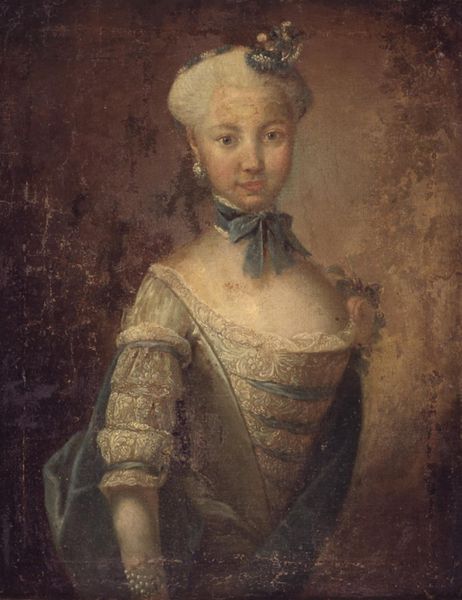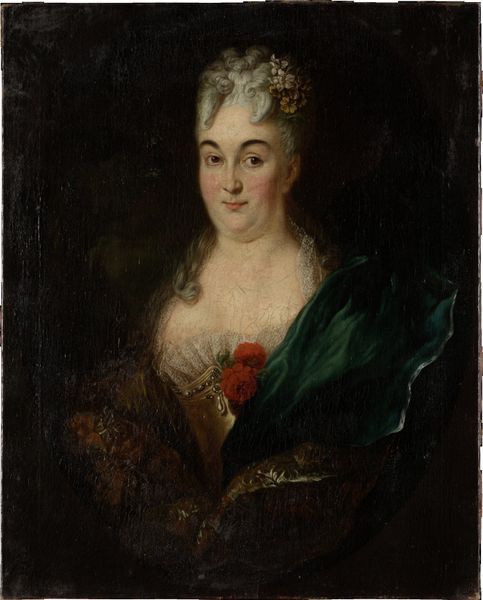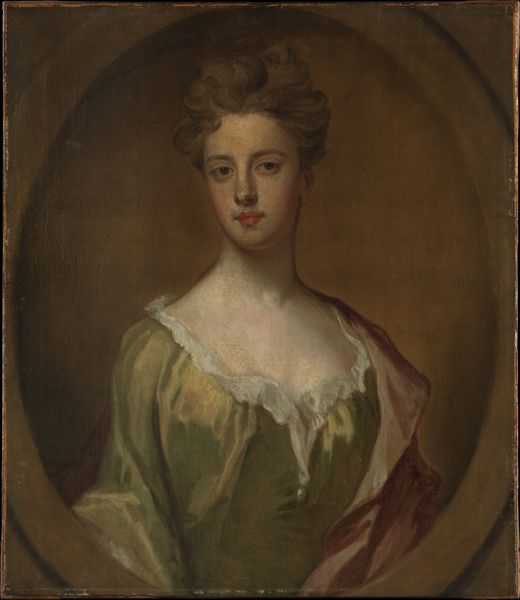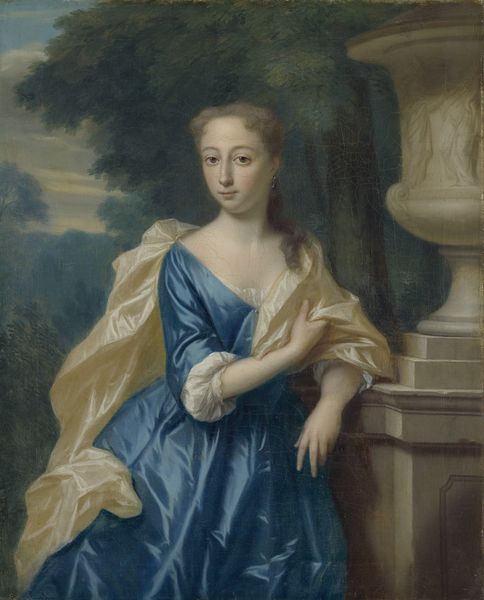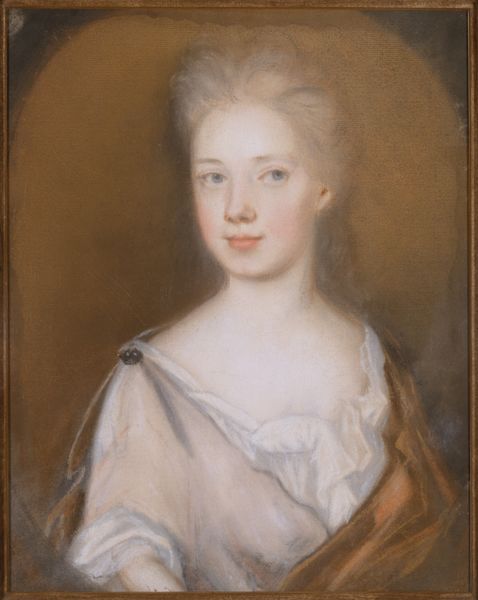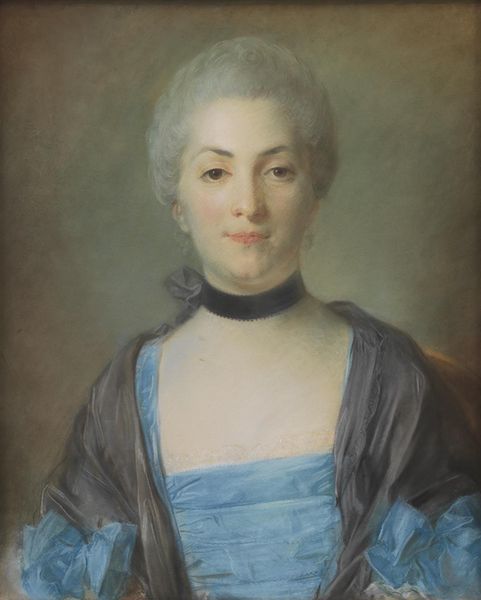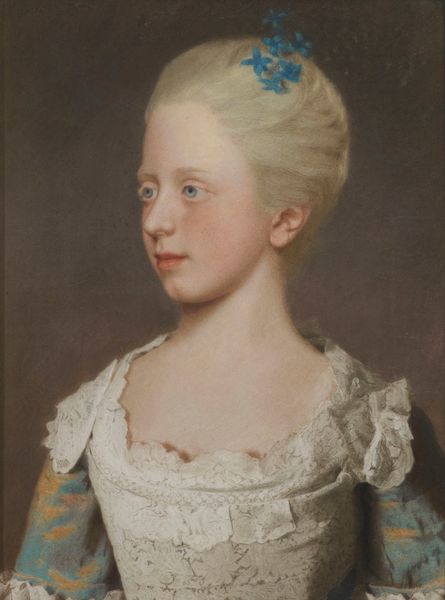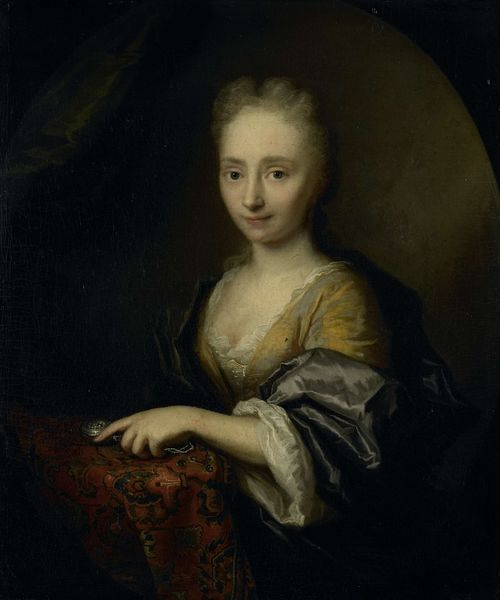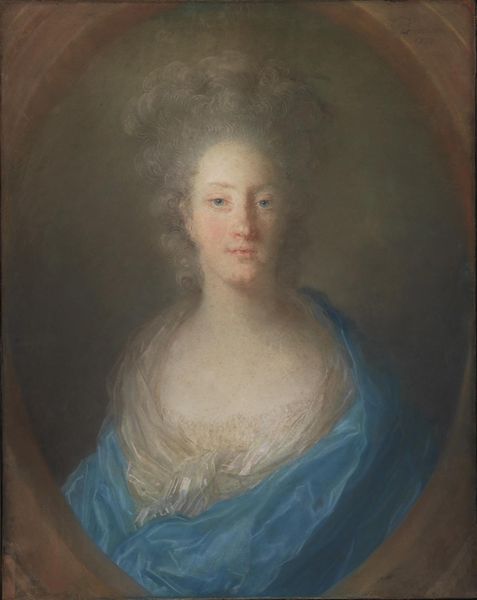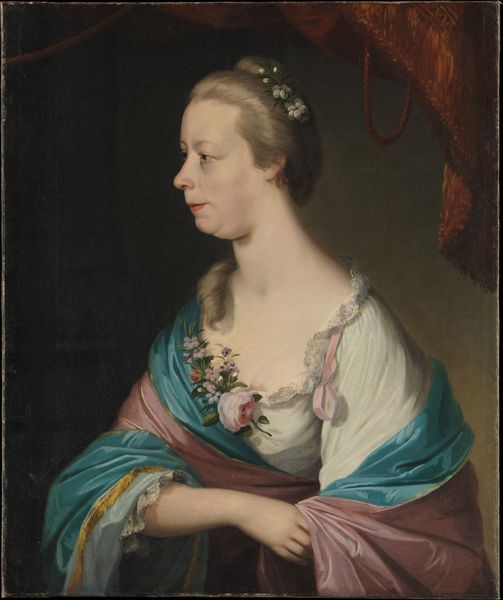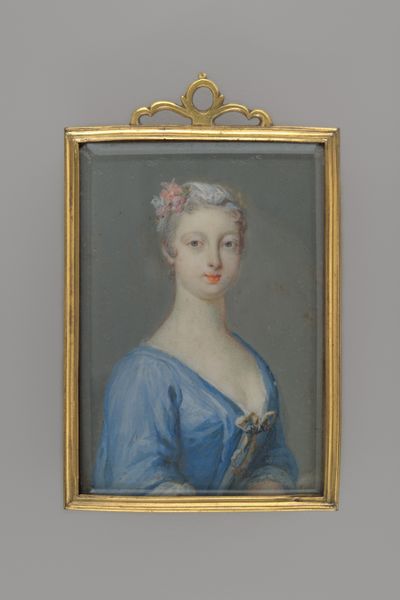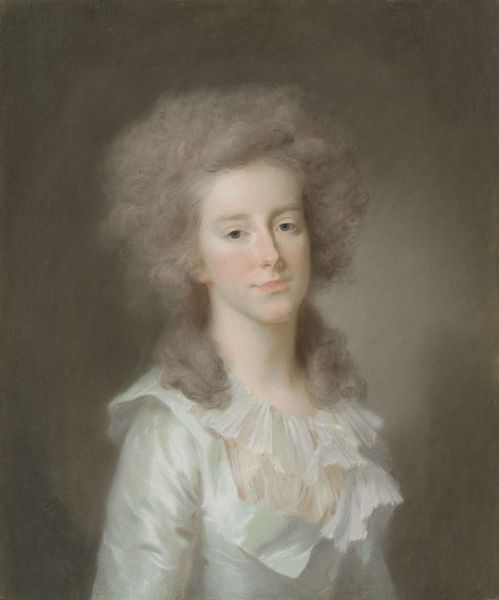
Dimensions: 53 cm (height) x 43 cm (width) (Netto)
Curator: This is "Dameportræt," an oil painting held at the SMK - Statens Museum for Kunst. Its creation is attributed to C.G. Pilo, and it dates to sometime between 1726 and 1793. Editor: Immediately, I am struck by how softly illuminated she is. It’s delicate and kind of melancholic, isn’t it? There is this faded almost haunted feeling to the light on her skin. Curator: Considering Pilo was a leading figure in portraiture during the Rococo period in Denmark and Sweden, it's vital to examine the sitter's social context. Portraits like this were commissioned by the upper classes, functioning as symbols of status and lineage. This work offers insights into gender and power during that era, really providing a lens through which we can look into the social and economic structure of the late 18th century. Editor: You’re right, there's the lace, the carefully arranged flowers in her powdered hair. These weren’t spontaneous choices but consciously displayed symbols of wealth and her place in that structure. Curator: It's compelling to view these artworks, once relegated to the aesthetics of aristocratic life, as invaluable historical documents offering social insights. Editor: Thinking about the gaze here is equally critical. Despite the idealized beauty, her direct look creates a sense of unease for me, and speaks of something I don't feel like she has agency over. There is a passivity within her gaze despite what she shows to others, almost reflecting an entrapment. Curator: And that gets to the crux of portraiture, doesn’t it? How much is a record of an individual, and how much is a construction, reflecting cultural ideals or societal expectations projected onto the sitter? The way museums curate such objects deeply affects how this piece can be interpreted today and what the expectations around that might be. Editor: These objects outlive their owners and, I think, develop palimpsests of meaning across different generations who reinterpret the paintings through different sociopolitical contexts. I think your suggestion to interpret this as part of that long thread of interpretation really offers audiences much more depth of context than previously received. Curator: Agreed. Shifting perspectives like this is really key in understanding the politics of the piece and offers us much needed insights.
Comments
No comments
Be the first to comment and join the conversation on the ultimate creative platform.
